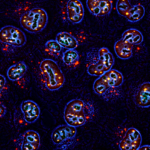Link to Pubmed [PMID] – 2170809
Mol. Biol. Med. 1990 Jun;7(3):213-22
Chronic hepatitis B virus (HBV) infection is etiologically related to human hepatocellular carcinoma (HCC). Most HCCs contain integrated HBV DNA in the liver cellular DNA, suggesting that the integration may be involved in carcinogenesis. From a comparison of a single HBV integration site present in a hepatoma with the corresponding unoccupied site in the non-tumourous tissue of the same liver, we have shown that HBV DNA inserted in a putative cellular exon with striking similarity to the DNA-binding domain of the thyroid/steroid hormone receptors. The corresponding cDNA has been isolated (hap gene) and shown to encode the retinoic acid receptor. In the original patient, integration took place so that the first codons of the viral surface protein gene became fused in frame with most of the hap gene. Because retinoic acid is known to regulate the transcription of target genes crucial for cellular growth and differentiation, it is most probable that consequent to the HBV insertion, hap, usually transcribed at a very low level in normal hepatocytes, became inappropriately expressed as an altered chimaeric retinoic acid receptor, thus contributing to the cell transformation. These results strongly support the possibility that HBV may play a direct role in liver carcinogenesis by insertional mutagenesis.

